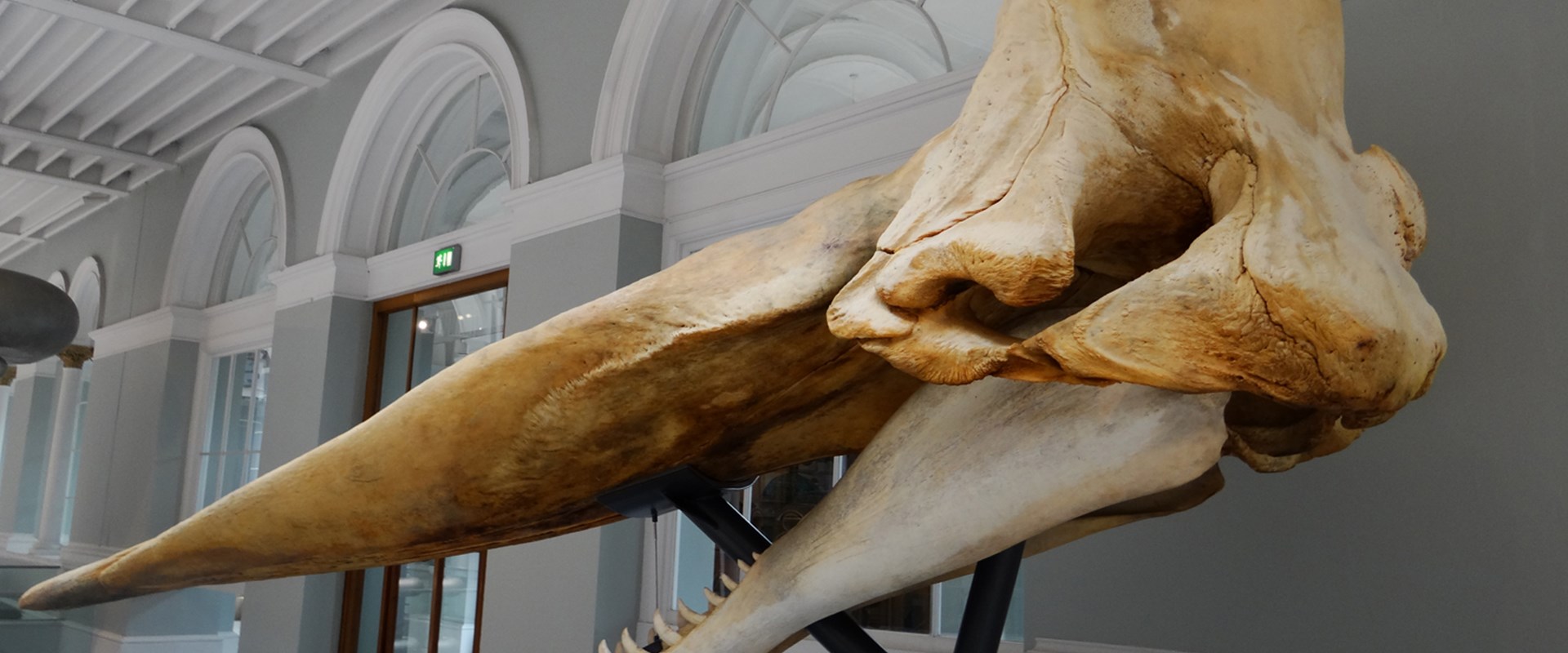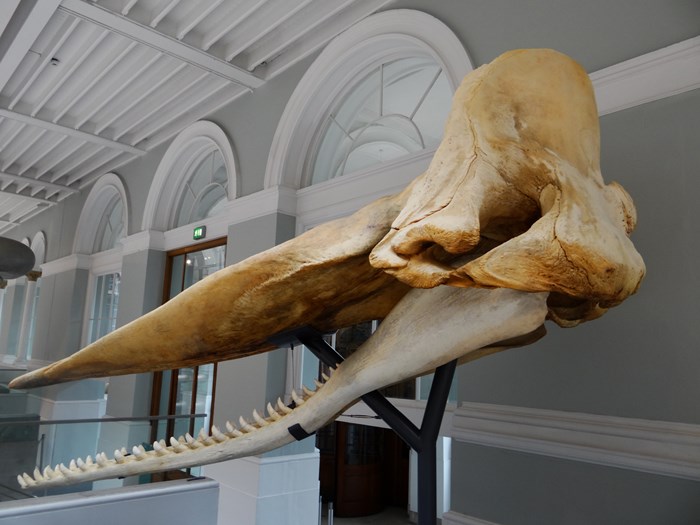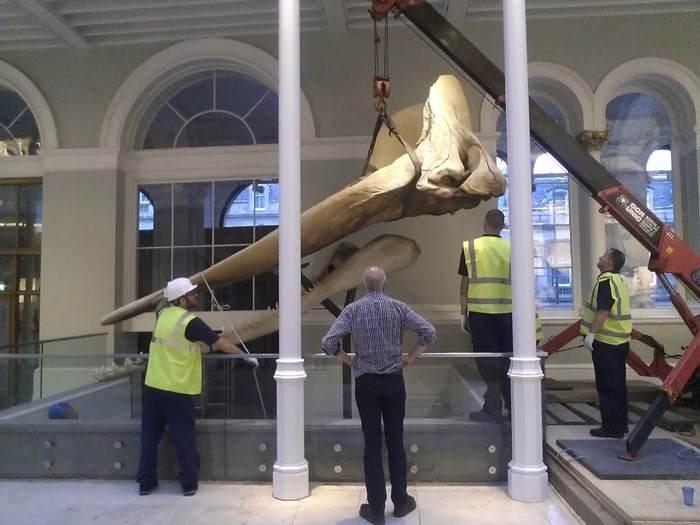Key in a search term below to search our website.
Key in a search term below to search our website.

Discover how the skull of a 40ft whale, which captured the heart of the nation, has become a permanent feature at the National Museum of Scotland.
Specimen name
Physeter catodon (sperm whale)
Dimensions
15.2m (length)
Weight
38.5 tonnes (body weight)
On display
Grand Gallery, Level 1, National Museum of Scotland
Did you know?
Sperm whales get their name from the waxy liquid spermaceti in their heads. This made them a target for whalers for over a century, but they are now a protected species.
The skull of a sperm whale found beached on the banks of the River Forth is now on display at the National Museum of Scotland.
The 40ft whale known affectionately as ‘Moby’ became a cause célèbre after being sighted swimming up the Forth rather than out to sea. Rescuers, including BP tugs and the pleasure boat Maid of the Forth, tried desperately to push him back out to sea. Unfortunately their efforts were in vain and sadly Moby beached and died on the foreshore at Airth on 31 March 1997 - the first sperm whale to be stranded in the Forth in over 200 years.

Above: Moby the sperm whale skeleton on display in the Grand Gallery, National Museum of Scotland.
Following his death, Moby’s skeleton was prepared by museum staff and is now in National Museums Scotland’s Natural Science collections, which is home to several million specimens, including one of the largest marine mammal collections in the world.

Above: Moby the sperm whale skeleton being manoeuvred into place in the Grand Gallery, National Museum of Scotland.
Moby tasted fame again in 2009, when his skull was loaned to Glasgow-based Turner Prize nominee Lucy Skaer for her work ‘Leviathan Edge 2009’ at Tate Britain.